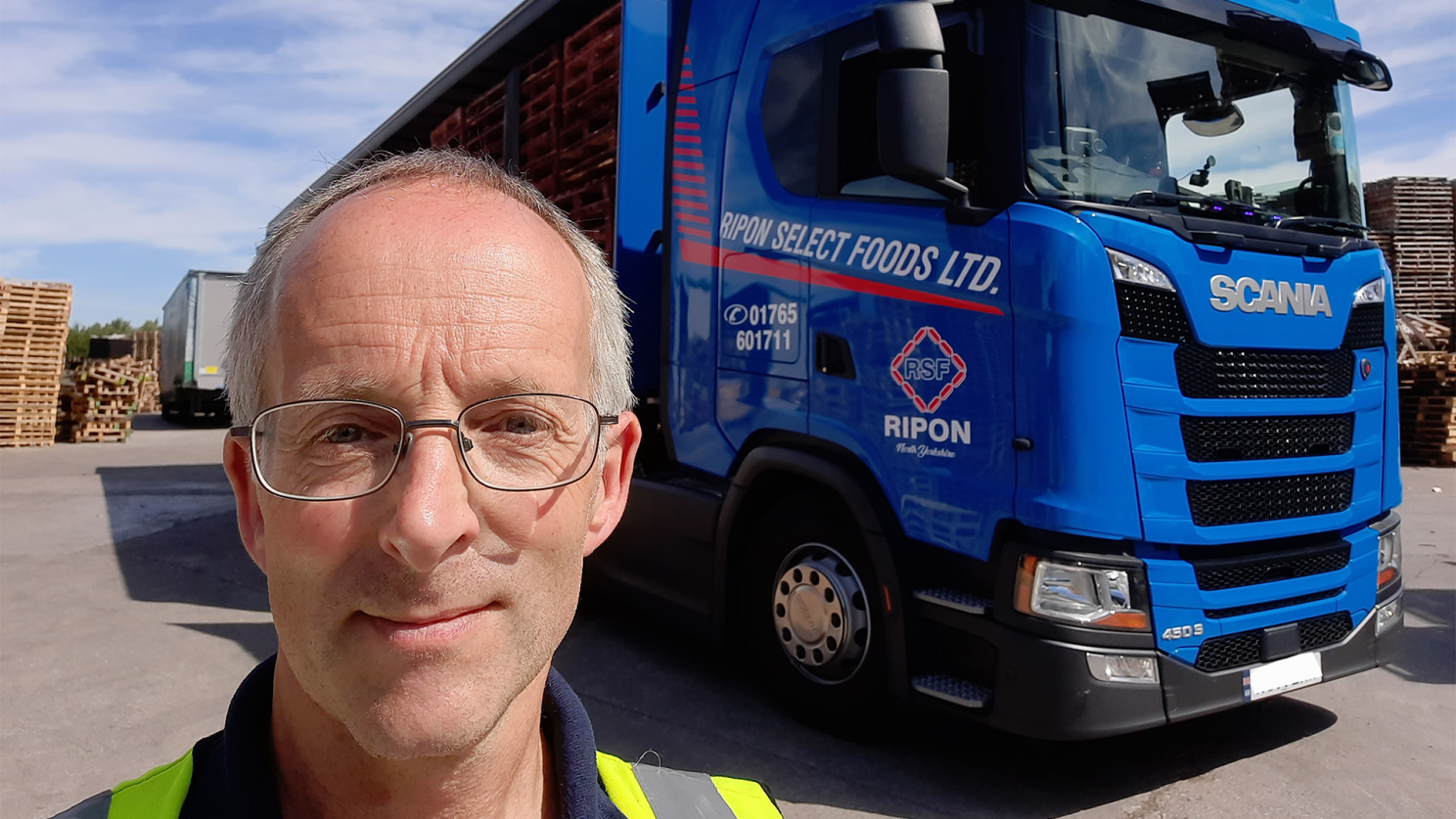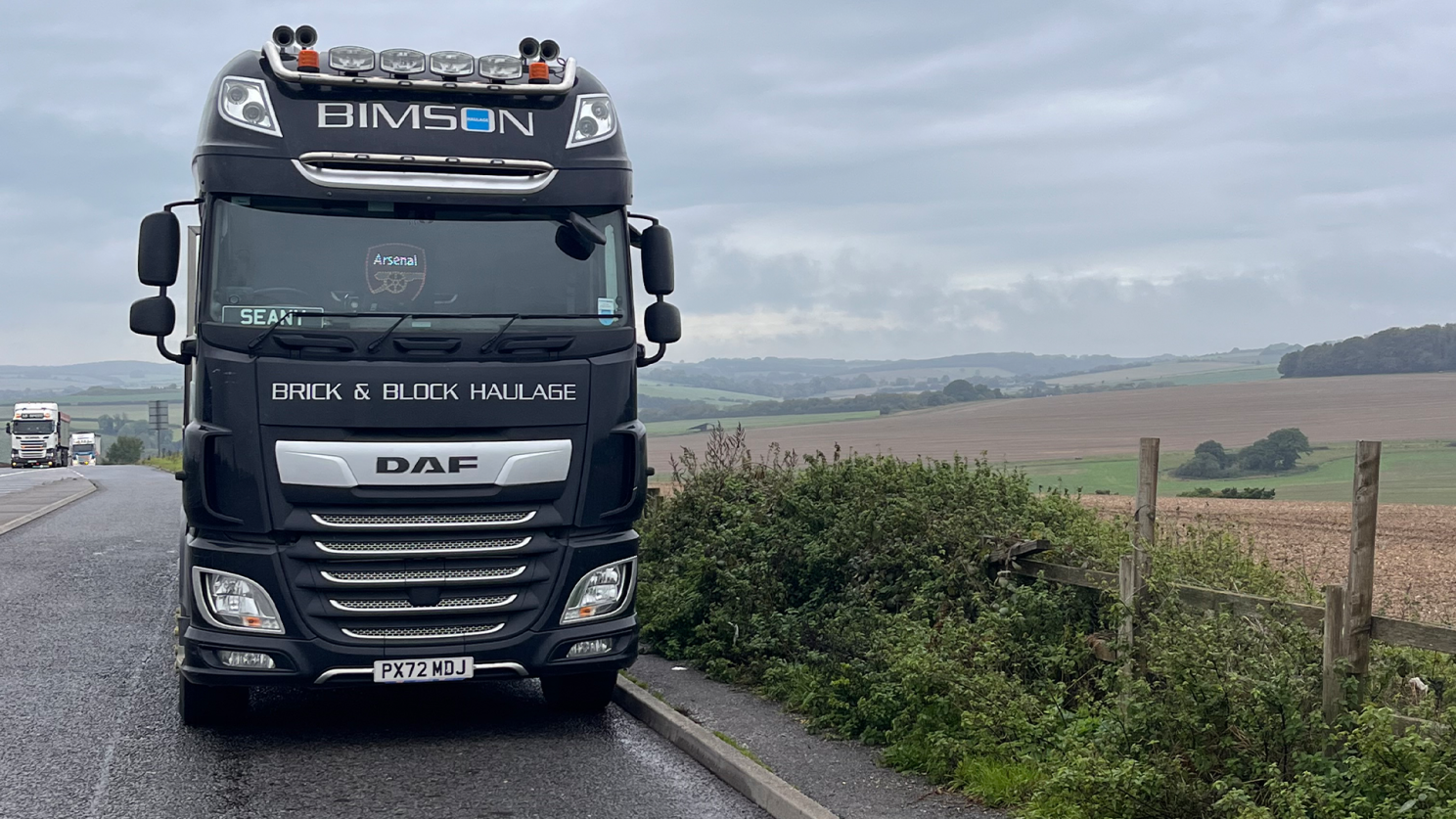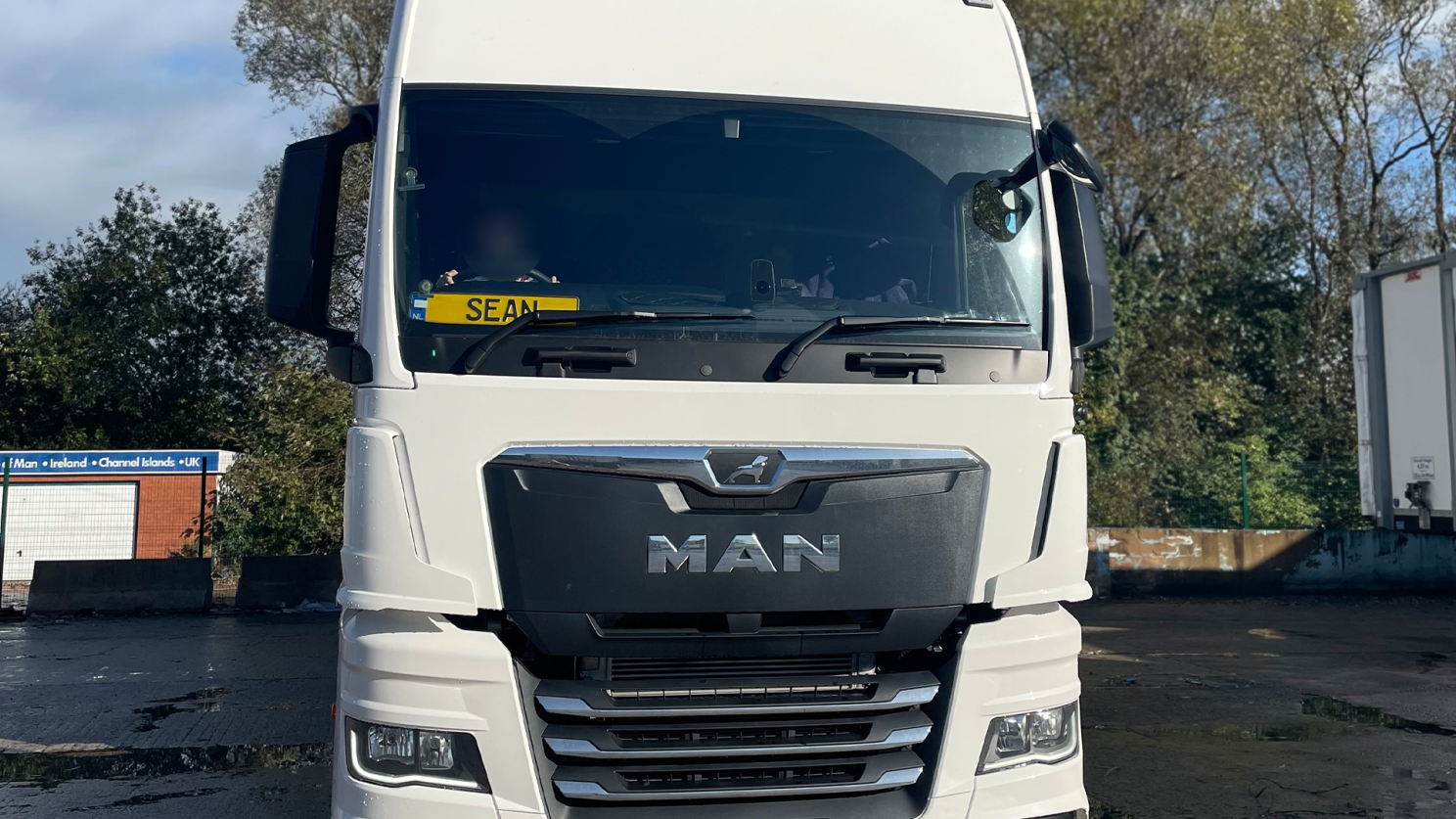
Susie Jones
Разкази на шофьори на камиони: истории от открития път
Създаден: 22.08.2024
•
Актуализирано: 22.08.2024
Искаме да хвърлим светлина върху общността на превозвачите на камиони и да се запознаем с хората зад волана.
Научете повече за шофьорите, които доставят стоките ви - от хеликоптерите, кацащи пред камионите, до автомобилите от грешната страна на магистралата.
Alan
Алън шофира от 23 години и решава да се присъедини към бранша, след като слуша песните на Али Томсън за шофиране на камион. Когато го питат какво обича най-много в работата, той заявява, че това е "самотата, която носи шофирането на камион - има пълно отделяне от домашния живот".
Камионите Volvo са му любими, тъй като той пътува из Обединеното кралство, за да транспортира стоки на Amazon. Казва, че е превозвал много интересни продукти: "Изборът е неограничен - помислете за всичко, което Amazon продава."
За шофьорите, които паркират през нощта, е трудно да се забавляват по време на престоя. Опитни шофьори като Алън обаче са усвоили до съвършенство вечерния си режим. Той заявява, че "обича да гледа Sky TV през iPad", когато е паркирал за през нощта.

За шофьорите, които се опитват да се забавляват зад волана, сме изготвили списък с начини за предотвратяване на отегчението(https://www.linkedin.com/pulse/you-bored-road-snap-account%3FtrackingId=WdH0FfVaRlqIItFQ9kHa5A%253D%253D/?trackingId=WdH0FfVaRlqIItFQ9kHa5A%3D%3D).
Макар че дългите часове на път може да се сторят монотонни на мнозина, Алън обяснява, че винаги има нещо, което го държи в напрежение.
"Мисля, че най-безумното нещо, което съм виждал, докато шофирам, е хеликоптер, който каца точно пред мен", обяснява той - далеч от монотонната репутация, която забулва индустрията от десетилетия.
С 23 години работа в тази индустрия зад гърба си Алън предлага няколко съвета, които ще запазят свежия вид на перлените ви зъби по време на пътуванията ви.
Той обяснява, че "съветът, който бих дал на всеки, който е нов в бранша, е винаги да не забравя да държи четката си за зъби заредена."
Richard
Преди 36 години Ричард започва кариерата си в транспортната индустрия и никога не поглежда назад. Той се запалва по шофирането, когато се присъединява към двамата си по-големи братя, за да им помага да доставят стоки в цяла Великобритания.
"Обичам да се натоварвам и да тръгвам. Аз решавам кога да си почина и къде да паркирам. Да си на път и да пътуваш из цяла Великобритания е страхотно", обяснява той.
По време на кариерата си животът на пътя го отвежда до Милано, Италия - изтощително пътуване дори за най-опитните шофьори. Когато го питат как се забавлява по време на пътуванията си, той отговаря: "Обичам да слушам музика и да гледам филми през свободното си време."

Най-добрият камион за това? "Това трябва да е Scania Next Generation 450S", казва той.
За Ричард 30-те години в бранша не са минали без доста луди истории и необичайни доставки: "Виждал съм кола, която се движи в обратна посока по магистрала, излизайки от отбивка. Най-интересното нещо, което съм качвал в задната част на камиона, е плаващото колело на парада на Свети Вилфред."
Въпреки че все още обича открития път, Ричард заявява, че понякога това си има цена. Той предлага чудесна представа за реалността на тази професия и съвети за тези, които искат да се присъединят към бранша.
"Помислете много добре дали това е подходящата професия за вас. Очаквайте дълги часове и липса на много от семейния живот."
Sean
Израстването в семейство на шофьори означава, че шофирането на камиони е в кръвта на Шон и преди 20 години той сяда зад волана и започва кариерата си в транспортната индустрия.
Работата е свързана с много предимства, но Шон най-много обича свободата, която му предлага. Тази свобода го е отвела до Шотландия, където е бил на шестседмична служба. По време на тези дълги пътувания той се забавлява, като се обажда на приятели и гледа телевизия.

Освен това спирките за камиони играят ключова роля за Шон в борбата с изолацията, която носи шофирането. Често спирките за камиони са оживен кошер, който позволява на Шон да се срещне с приятели по време на пътуванията си.
Тези спирки са идеалната възможност да чуете безумни истории от други шофьори на камиони. Подобно на Ричард, най-странното нещо, което Шон е виждал по време на пътуванията си, е "автомобил, който се движи в погрешна посока по магистрала в тъмното" - история, която е твърде често срещана сред общността на шофьорите на камиони.
DAF XF 530 е избраният от Шон камион за транспортиране на строителни материали в Обединеното кралство. Той съветва всеки, който иска да направи кариера в областта на товарните превози, "просто да го направи!"
Дейв
Дейв шофира камиони от 30 години и е пътувал до Дания и Испания. Когато не пътува с любимия си камион - Volvo FH, той обича да гледа сериали в комфорта на кабината си.
"Поведението на някои шофьори на автомобили ми даде възможност да разкажа някои луди истории", обяснява той. Въпреки това, когато попитахме Дейв за най-интересното нещо, което е имал на задната седалка на камиона си, той запази мълчание - "това е строго секретно", заявява той.
След 30 години работа в сферата на превоза на стоки Дейв е научил някои неща за света на товарните превози. Той дава чудесен съвет на тези, които искат да започнат кариерата си в бранша - "уверете се, че сте специализирали в нещо".
Аластър
Сравнително нов в бранша, Аластър решава да започне кариера като шофьор на камион, за да се занимава с това след пенсионирането си. С пет години стаж той се наслаждава на разнообразието на професията повече от всичко останало.
През това време Аластър успява да пътува из Обединеното кралство и Европа: "Пътувал съм до Инвърнес, Копенхаген, Лисабон, Будапеща и Рим", заявява той.
За да предотврати настъпването на скуката, Аластър обича да слуша "Радио 4, LBC и 5 Live".
Пътувайки из Европа, той е ставал свидетел на необичайно поведение от страна на други участници в движението. По-близо до дома си обаче му се налага да маневрира с камиона си по време на "демонстрациите в Лондон. Това беше вероятно най-безумното нещо, което съм преживявал", обяснява той.
За почитателите на 007 Аластър споделя как му се е наложило да транспортира някои свръхсекретни предмети.
"Най-интересните предмети, които съм превозвал в задната част на камиона, вероятно са изложбените предмети на Джеймс Бонд", заявява той.
Въпреки че Аластър не е в тази индустрия от дълго време, той има няколко думи за начинаещите в нея.
"Съветът, който бих дал на някой, който мисли да се присъедини към света на товарните превози, е да запази спокойствие."
Sean V
Любовта на Шон към пътя се дължи на многото летни ваканции, които той прекарва с баща си, пътувайки с неговия камион. След 30 години шофиране любовта му към шофирането продължава да е силна.
"Това, което обичам в работата си, е да виждам всички хубави места в Обединеното кралство и Европа", обяснява той. Тази работа го е отвела до различни дестинации - най-далеч е пътувал до Рим.
Когато не опознава градовете, Шон обича да се забавлява, като гледа телевизия, използва своя iPad, а доскоро играеше игри в комфорта на собственото си такси.

Най-безумното нещо, на което е ставал свидетел по време на път?
За съжаление, Шон става свидетел на гледка, която е твърде често срещана сред шофьорите на камиони - "автомобил, движещ се в неправилна посока по магистралата", обяснява той.
По време на 30-годишната си кариера Шон твърди, че камионите DAF са били любимите му за шофиране, а най-интересният предмет, който е превозвал, е бил "специализирано медицинско оборудване".
Любовта на Шон към индустрията надделява над някои от негативните аспекти на работата. Въпреки това, за тези, които искат да започнат кариерата си в сектора на товарните превози, той има да им предложи тези мъдри думи:
"Ако смятате да се присъедините към този бранш, очаквайте дълги часове работа."
Регистрирайте се в SNAP днес
SNAP улеснява живота ви, като ви свързва с нашата широка мрежа от пътни транспортни услуги. Регистрирайте се днес.



